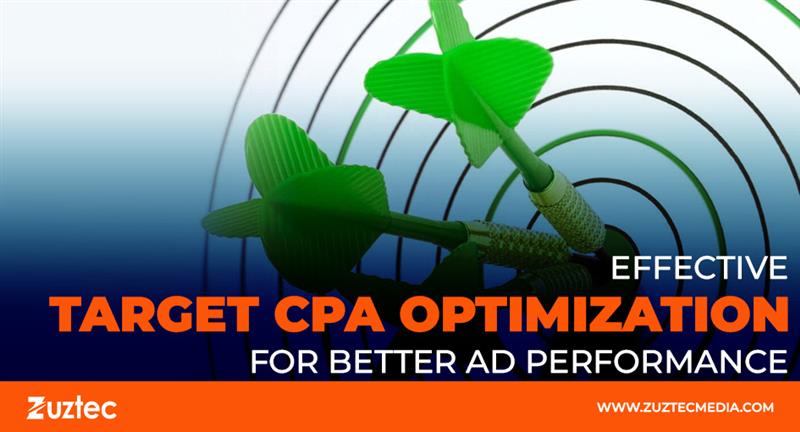
Effective Target CPA Optimization For Better Ad Performance
In the world of online advertising, marketers are constantly seeking smarter ways to improve performance and reduce costs. One of the most valuable bidding strategies available on platforms like Google Ads is Target CPA optimization. This strategy focuses on driving as many conversions as possible at or below a predefined cost, helping advertisers stay within budget while still reaching their goals.
As competition continues to grow and paid media becomes more expensive, advertisers are relying more on data-driven automation to guide their bidding strategies. Target CPA is a powerful way to achieve this, especially when you want to scale your campaign while maintaining efficiency. It lets machine learning optimize each bid to increase the chance of converting, based on past user behavior and contextual signals.
To get the most from this strategy, however, you need to understand how target Cost-Per-Acquisition optimization works and how to set it up correctly. A poorly configured strategy can lead to a wasted budget or reduced visibility, while a well-tuned campaign can increase conversions and lower costs. It’s not just about setting a number—it’s about tracking the right signals, managing data accurately, and giving Google’s algorithm the room it needs to learn and adjust.
Understanding Target CPA Optimization And How It Works
Instead of manually adjusting bids for every keyword or ad group, the system uses historical data and machine learning to predict which clicks are likely to convert and sets bids accordingly.
To use this feature effectively, you first need to define a realistic CPA goal. This number should be based on historical performance and profitability, not just an ideal figure. If it’s too high, you may overspend without achieving the desired ROI.
One important thing to note is that the system needs enough conversion volume to learn and adjust effectively. Without this volume, the learning period will be longer and less accurate. You also need to ensure that conversion tracking is set up properly so the system receives clean, accurate data.
Setting The Right CPA And Campaign Structure
The foundation of a strong target CPA strategy is setting the right bid target. This number should be informed by your average cost per conversion over the past few weeks. If you’ve been spending $50 per conversion, setting your target CPA at $30 is likely unrealistic and could lead to missed opportunities. A better approach is to set it slightly lower than your current average, then gradually reduce it as the campaign improves.
Campaign structure also plays a big role in the effectiveness of your bidding strategy. Make sure your ad groups are tightly themed, with similar keywords and landing pages. This ensures consistency and helps the algorithm understand performance patterns more quickly.
Start with separate campaigns for distinct goals. For example, use one campaign for brand awareness with a higher CPA and another for retargeting with a lower CPA. This segmentation allows more control and makes it easier to manage your optimization efforts.
Common Mistakes That Hurt Optimization
One of the most common mistakes in target cpa optimization is changing your settings too frequently. Each time you adjust your CPA goal or restructure your campaign, the learning period resets. This means the algorithm starts from scratch, and performance may drop temporarily.
Another issue is starting with insufficient data. If you haven’t generated enough conversions or if your tracking is incomplete, the system won’t have the information it needs to optimize effectively. Always ensure that your tags are firing correctly and that the conversions you’re tracking are meaningful to your business.
Budget constraints are also a concern. If your daily budget is too low, the algorithm won’t have enough room to test and learn. Ideally, your budget should be at least two to three times your target CPA. This gives the system enough flexibility to bid competitively and test different scenarios.
Tips For Scaling And Improving Performance
Once your campaign is performing well at your target CPA, you may want to scale it. A good practice is to increase the budget by no more than 15–20% at a time, allowing the algorithm to adjust without re-entering a long learning phase.
A/B testing can also help you fine-tune performance. Test different landing pages, ad copy, and calls to action to see what combination drives the best results. This not only improves conversion rates but also gives the algorithm more positive signals to work with.
Another strategy is to use audience layering. Adding demographic or interest-based audiences helps Google refine its targeting even further, especially when layered with keyword intent. Over time, this can improve performance without increasing costs.
Significantly, target Cost-Per-Acquisition optimization is a powerful tool for advertisers who want to control costs while maximizing conversions. By leveraging machine learning, it adjusts your bids in real time based on performance data, helping you reach the right people at the right price.
By understanding the mechanics behind this strategy and avoiding common mistakes, you can unlock better results and improve ROI. In the end, advertisers who commit to consistent tracking, testing, and smart scaling will gain the most from target cpa optimization and see stronger performance across their digital campaigns.

